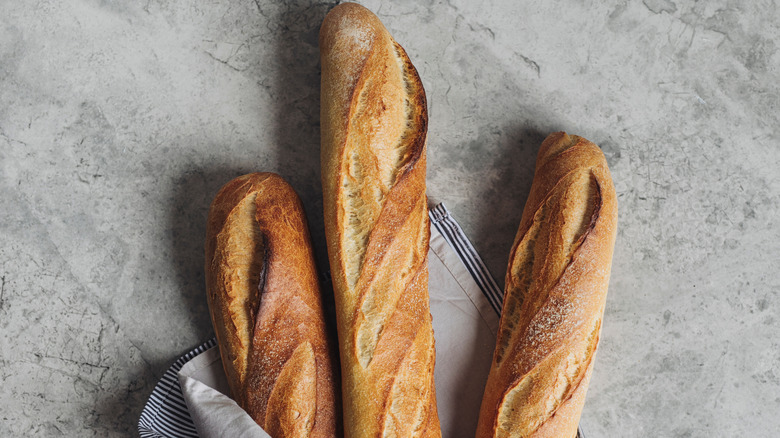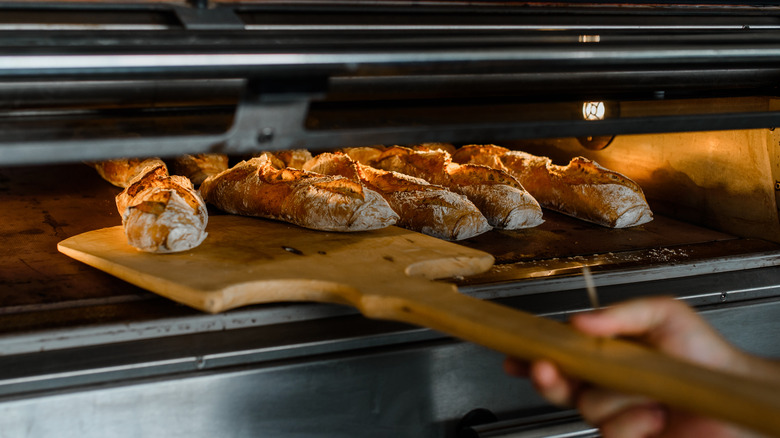The Unexpected Trick For Saving A Stale Baguette
There are plenty of types of bread you can buy that will last a good while before they start to mold or go stale. Baguettes, unfortunately, aren't one of them. As Our Everyday Life explains, baguettes tend to get hard quickly because they contain only flour, water, and yeast — but no fat. Without fat, it can't retain moisture, and that's why breads made with oil, milk, or butter have a much longer shelf life than baguettes.
If time hasn't been kind to your baguette, your first instinct might be to turn it into croutons or pulverize it into breadcrumbs. However, the truth is, a baguette can actually return to its original state. According to The Spruce Eats, this is possible because of food science and the properties of starch. Bread gets stale because of retrogradation, when the water evaporates out and the starches crystalize. In order to reverse retrogradation, then, you have to add the lost moisture back in. So how exactly do you go about that?
It involves the oven and more water
You probably wouldn't think to put a stale baguette back in the oven, but that's exactly what you need to do in order to soften it, Bon Appétit explains. Before re-baking your baguette, however, you'll first need to re-hydrate it. The best way to do this, per Bon Appétit, is to run the whole loaf under hot or cold running water until it's fairly drenched. Ideally the baguette should only be wet on the outside, but if the inside ends up getting wet too, you'll simply have to increase the baking time.
The warm setting is ideal, but if your oven doesn't have one, set it to the lower temperature. Food Network advises against going any higher than 300 degrees because you want the bread to gradually soften. If the temperature is too hot, it'll dry out too quickly, and you'll be left with stale bread once again. When the crust is dry again, or after about six to 10 minutes, it's ready to take out and enjoy.

